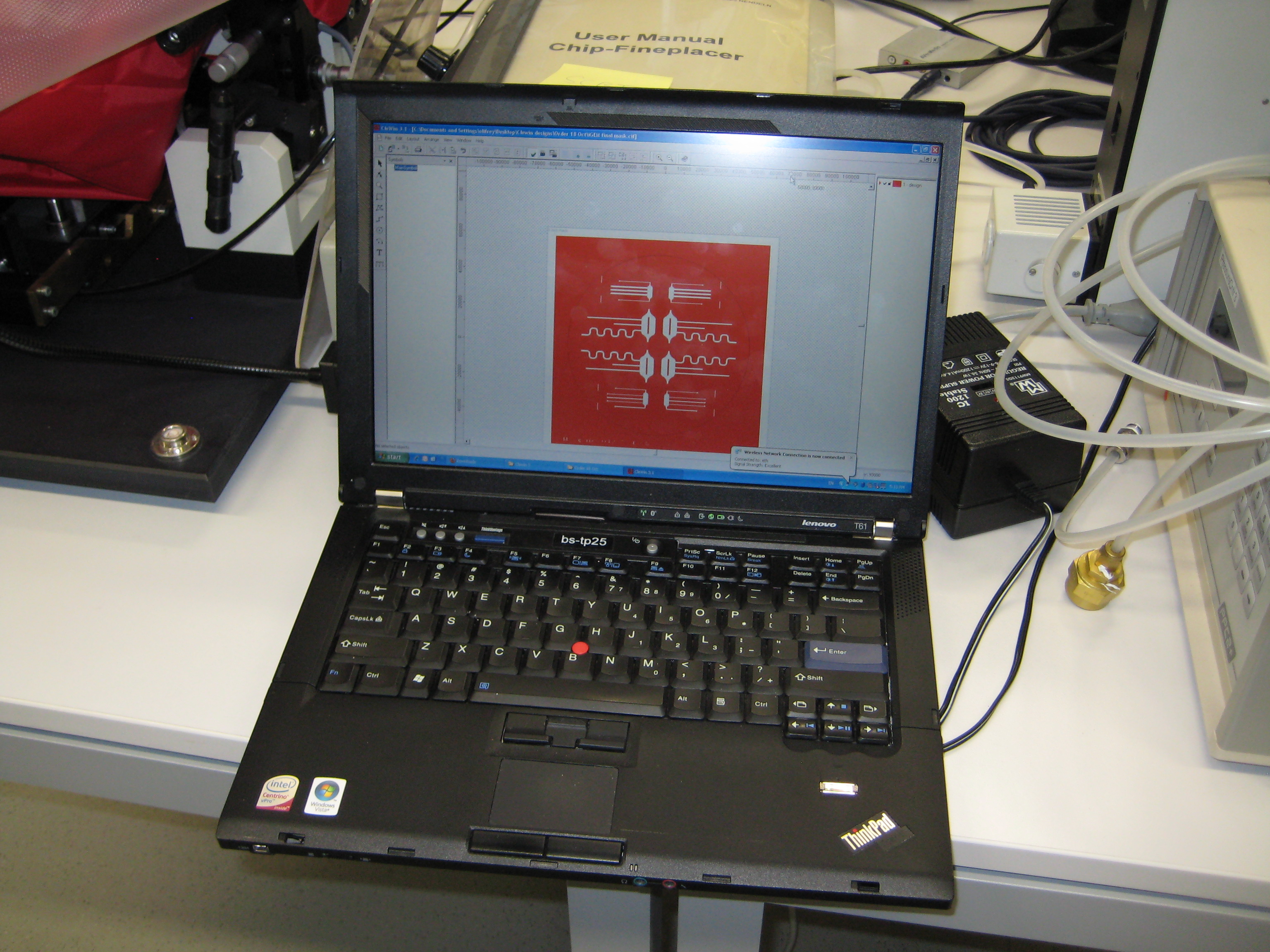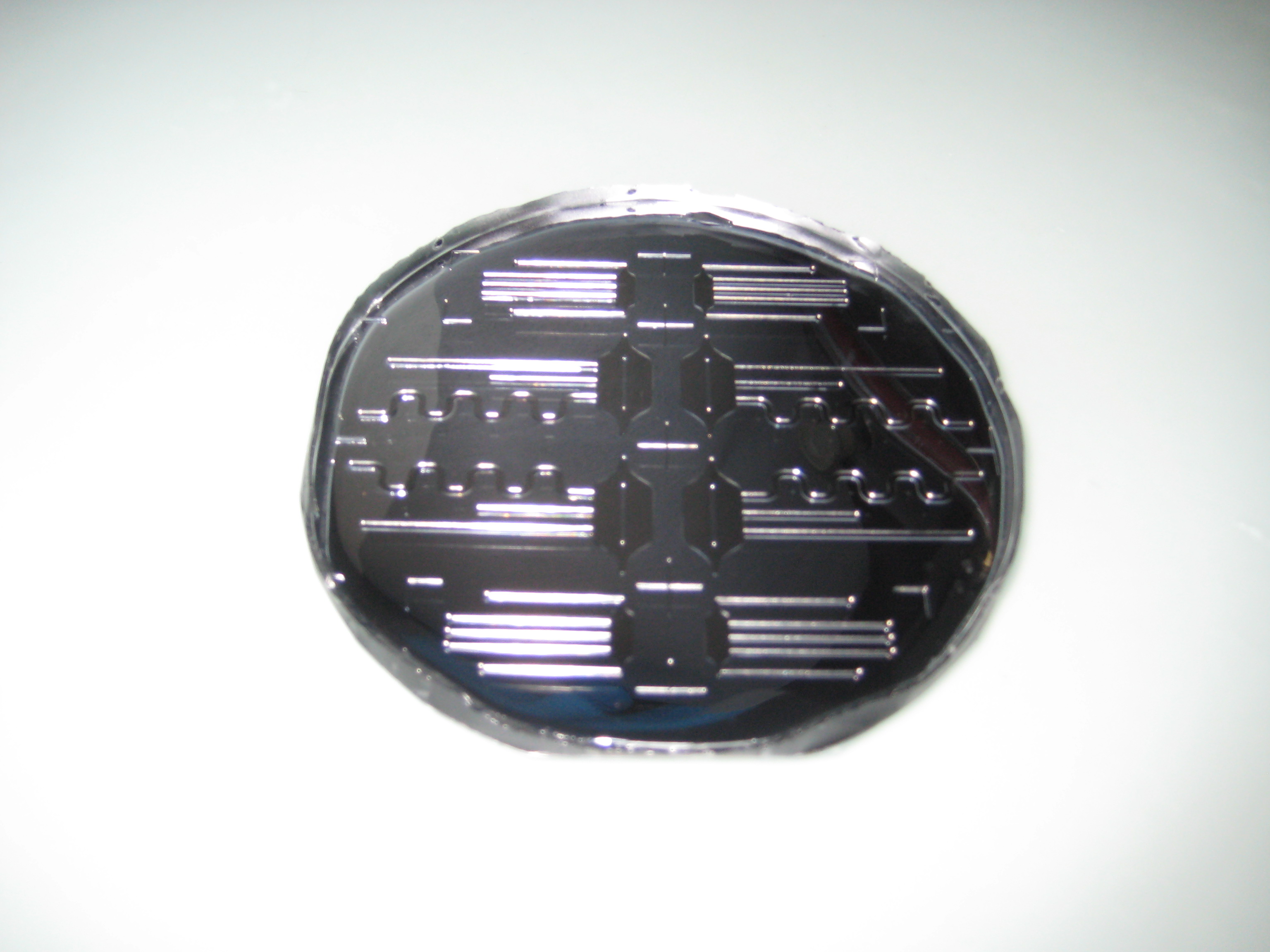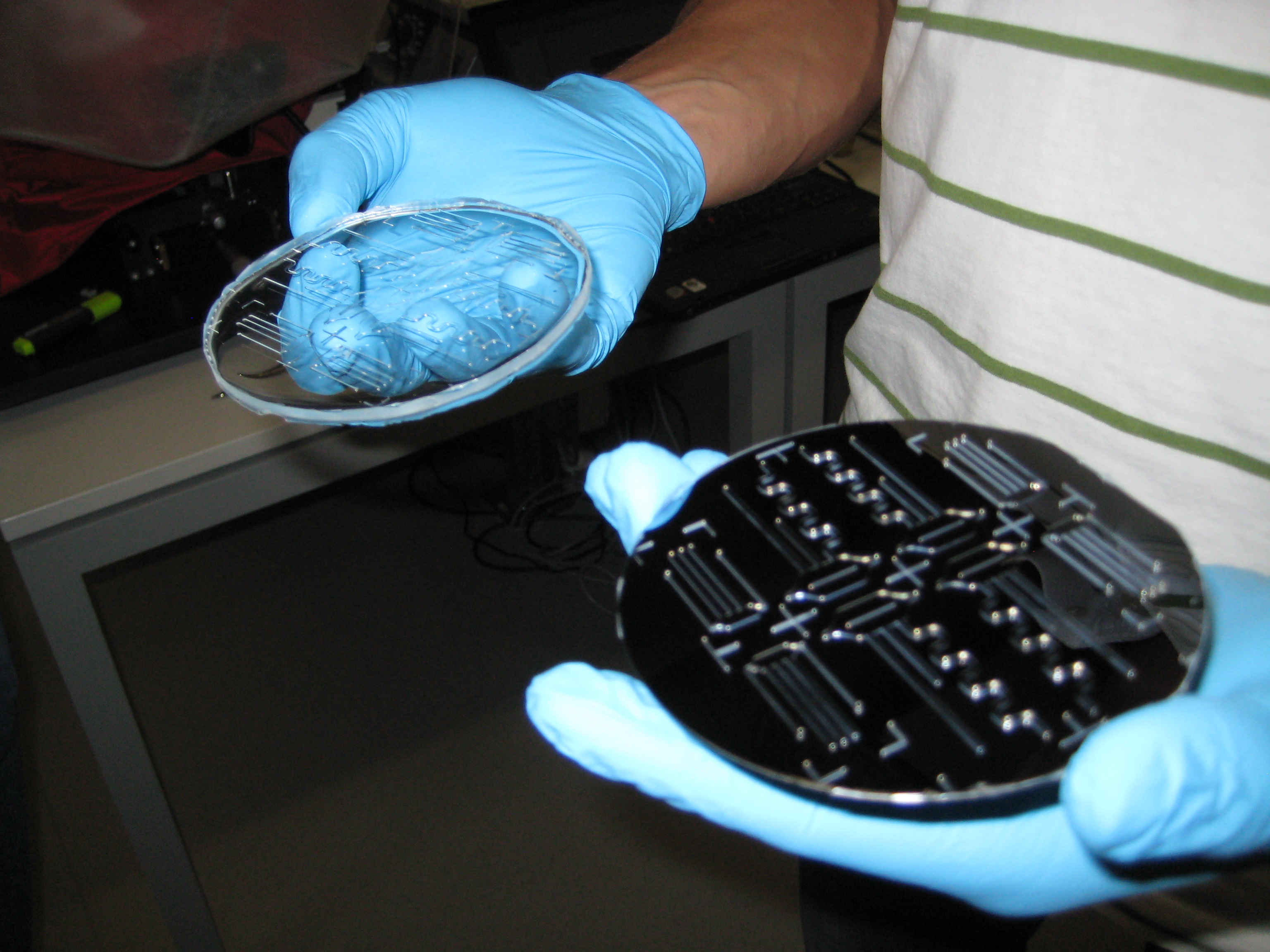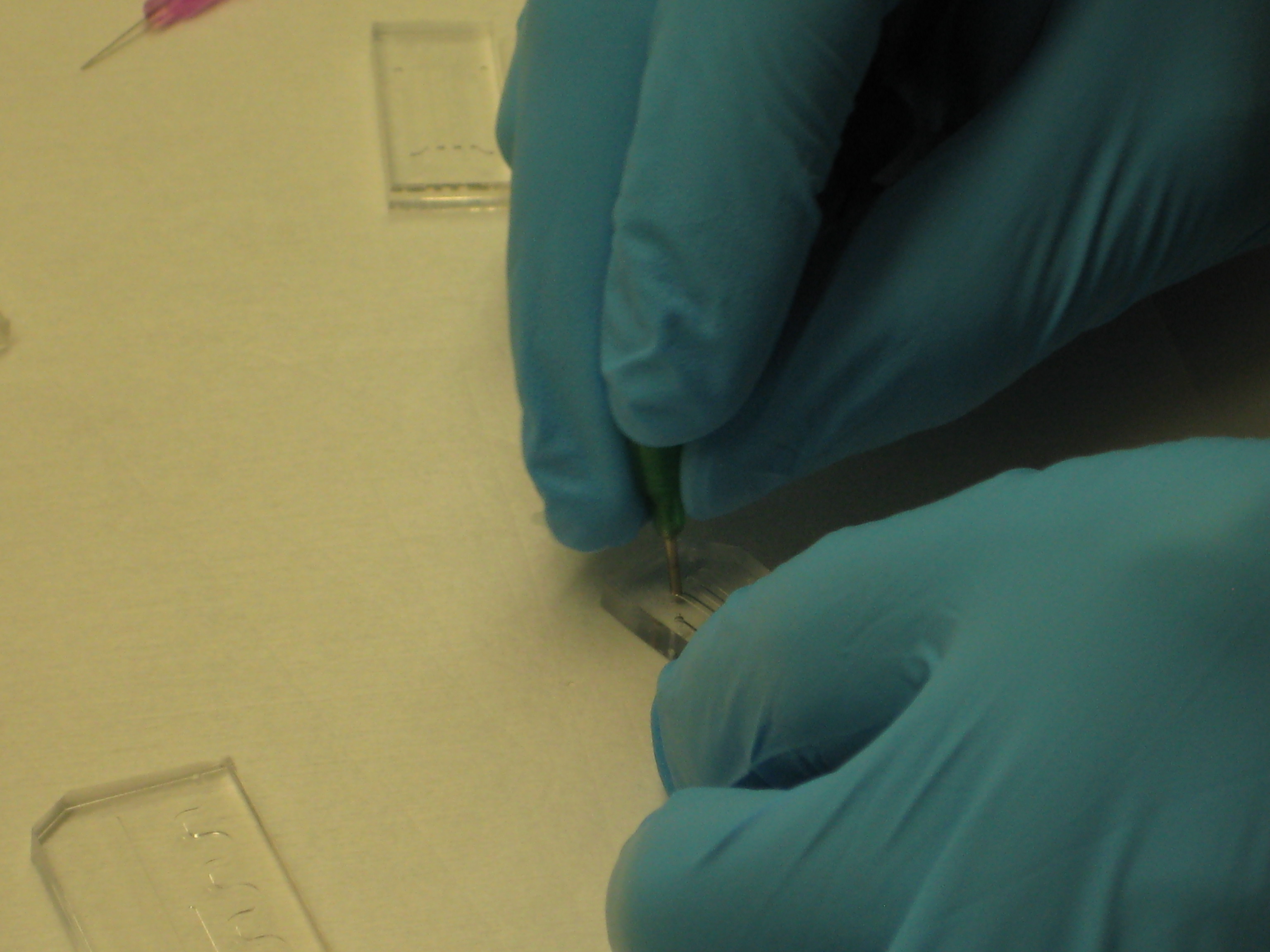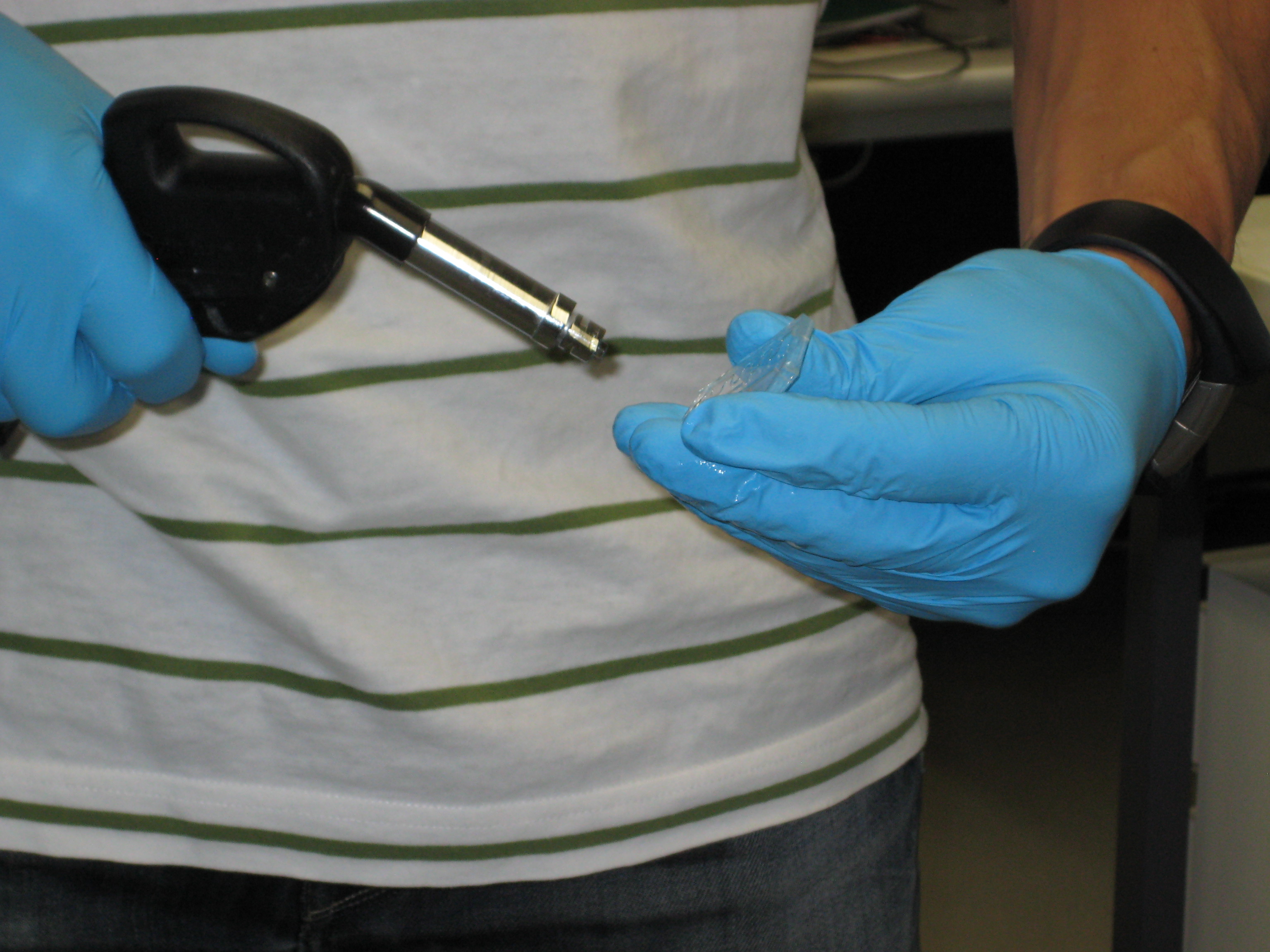Team:ETH Zurich/Process/Validation
From 2011.igem.org
| Line 1: | Line 1: | ||
| - | {{:Team:ETH Zurich/Templates/ | + | {{:Team:ETH Zurich/Templates/HeaderNew}} |
| - | + | ||
| - | + | {{:Team:ETH Zurich/Templates/SectionStart}} | |
| - | + | = Final Setup and Validation = | |
| - | + | '''This page presents description of our final channel design as well as description of its construction, which we did by ourselves. Our final channel is build out of polydimethylsiloxane (PDMS) and constructed with a technique called photolithography. We are also presenting the experiments we did to validate our setup and to show that it can work in practice''' | |
| - | + | {{:Team:ETH Zurich/Templates/SectionEnd}} | |
| - | + | {{:Team:ETH Zurich/Templates/SectionStart}} | |
| - | + | ||
| - | + | ||
| - | + | ||
| - | + | ||
| - | + | ||
| - | + | ||
| - | { | + | |
| - | + | ||
== Final channel construction== | == Final channel construction== | ||
| Line 40: | Line 32: | ||
[1] http://www.elveflow.com/microfluidic/16-start-with-microfluidics | [1] http://www.elveflow.com/microfluidic/16-start-with-microfluidics | ||
| - | + | {{:Team:ETH Zurich/Templates/SectionEnd}} | |
| - | + | {{:Team:ETH Zurich/Templates/SectionStart}} | |
| - | { | + | |
| - | + | ||
| - | + | ||
==Setup Validation== | ==Setup Validation== | ||
| Line 54: | Line 43: | ||
[[File:ETHZ_arabinose_gradient.png|500px|center|thumb|'''Figure 1: Proof of principle, arabinose-inducible GFP gradient created in the microfluidic PDMS devise ''' ]] | [[File:ETHZ_arabinose_gradient.png|500px|center|thumb|'''Figure 1: Proof of principle, arabinose-inducible GFP gradient created in the microfluidic PDMS devise ''' ]] | ||
| + | {{:Team:ETH Zurich/Templates/SectionEnd}} | ||
| + | {{:Team:ETH Zurich/Templates/HeaderNewEnd}} | ||
Revision as of 18:27, 25 October 2011
Final Setup and Validation
This page presents description of our final channel design as well as description of its construction, which we did by ourselves. Our final channel is build out of polydimethylsiloxane (PDMS) and constructed with a technique called photolithography. We are also presenting the experiments we did to validate our setup and to show that it can work in practice
Final channel construction
To construct our final channel, we used the technique photolithography. Photolithography is the photopatterning of channels from a mask (drawing of channels in 2D) and is based on the utilization of particular substances (photoresists) that become soluble to particular solvents after being exposed to UV light [1].
You can see below some photos of the channels and the channel building process:
Within the devise we created small channels of different lengths ( and mm). The width of all of them is mm and their height is mm.
References:
[1] http://www.elveflow.com/microfluidic/16-start-with-microfluidics
Setup Validation
bla
We checked whether our designed works by putting an engineered cells that produce GFP upon arabinose induction in agarose and filling the channel with it. In the reservoir we put arabinose in ____________ ?? After _____?? we optained a nice arabinose-inducible GFP gradient.
 "
"


